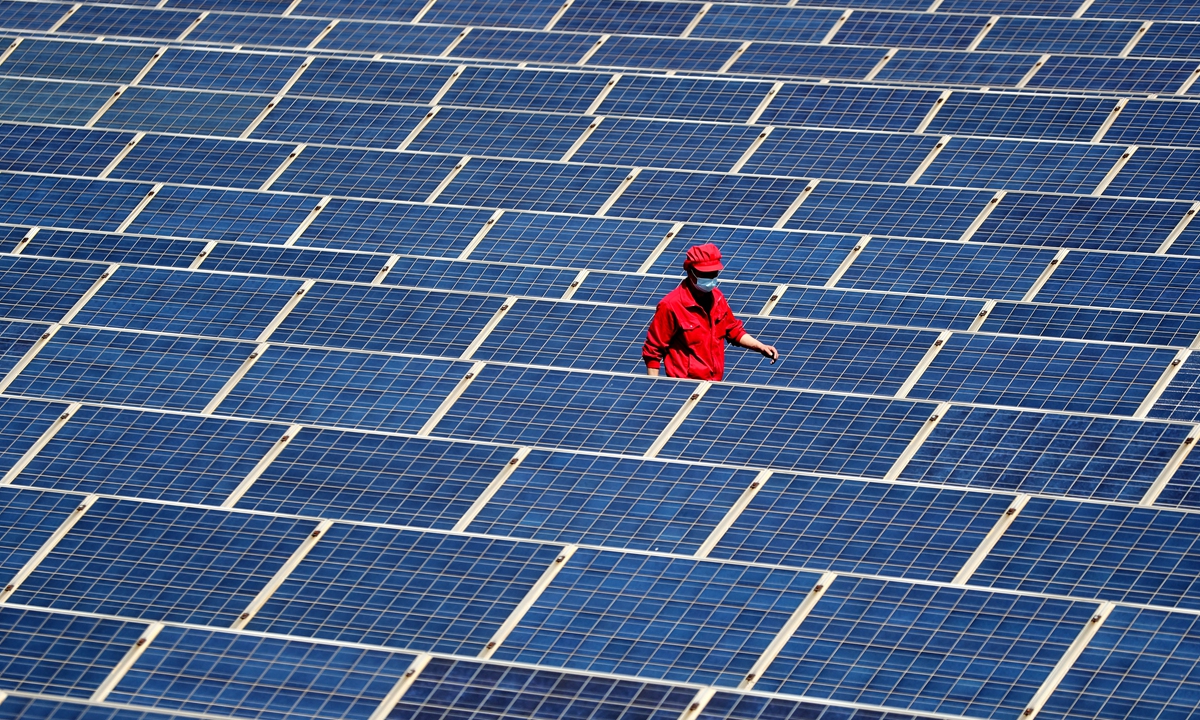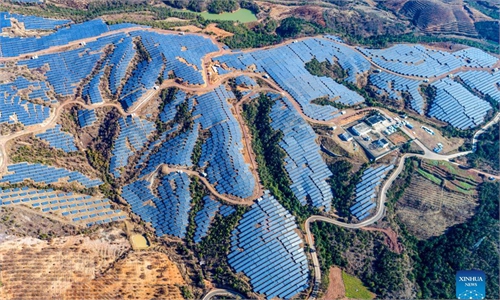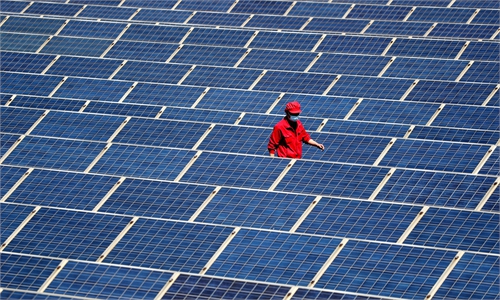China’s largest desert solar panel base in northwestern Ningxia starts construction

A technician inspects the rooftop photovoltaic (PV) power generation project of a company in Jimo district, East China's Shandong Province on May 4, 2022. Photo: cnsphoto
China's largest desert solar photovoltaic (PV) base, located at Tengger Desert in Zhongwei, Northwest China's Ningxia Hui Autonomous Region, has started construction, local newspaper Ningxia Daily reported on Sunday, marking an important step in the national development of new energy infrastructure amid the country's push for carbon neutrality.
The solar panel base has an installed capacity of 3 gigawatts and an investment of 15.2 billion yuan. The first phase of the project will achieve a capacity of 1 million kilowatts. Once the base is put into operation, its annual electricity output will reach 5.78 billion kilowatts, equivalent to saving 1.92 million tons of standard coal per year.
The solar cell base is also a major accommodating project of a national mega project of transmitting electricity generated in Ningxia to Central China's Hunan Province. The mega project is the nation's first ultra-high-voltage power transmission channel with photovoltaic base in desert, and the channel mainly delivers new energy. It has a length of 1,467 kilometers and is expected to increase electricity supply to Hunan Province by one sixths by the end of 14th Five-year Plan (2021-25) period.
The Tengger Desert is the fourth largest desert in China, with rich solar and wind energy resources. Chinese officials said that the construction of wind and solar power plant in northwestern desert regions will be the priority of China's carbon emissions reduction during the 14th Five-year Plan period.
In September, China's National Energy Administration (NEA) announced at a meeting that the first round of large-scale wind and solar panel base projects, mostly in desert areas - with a combined capacity of 97.05 gigawatts under a national renewable energy plan - had started construction, while some of the second round of solar projects also underway. The NEA also emphasized that the third round of base projects should begin preparing relevant work as soon as possible.
China's usage of renewable energy sources is expected to surpass 50 percent as a percentage of overall energy use increments by 2025, and wind and solar energy will double over 2020 levels, further accelerating the process of China achieving its stated carbon emissions goal, the Shanghai Securities News reported.
In the first seven months of 2022, China's newly installed capacity for renewable energy generation hit 65.02 million kilowatts, representing 77 percent of total newly installed power generation, data from the NEA revealed. China generated 1.52 trillion kilowatt-hours of electricity from renewable energy during the January-July period, accounting for 31.8 percent of the electricity generated nationwide.
Global Times



